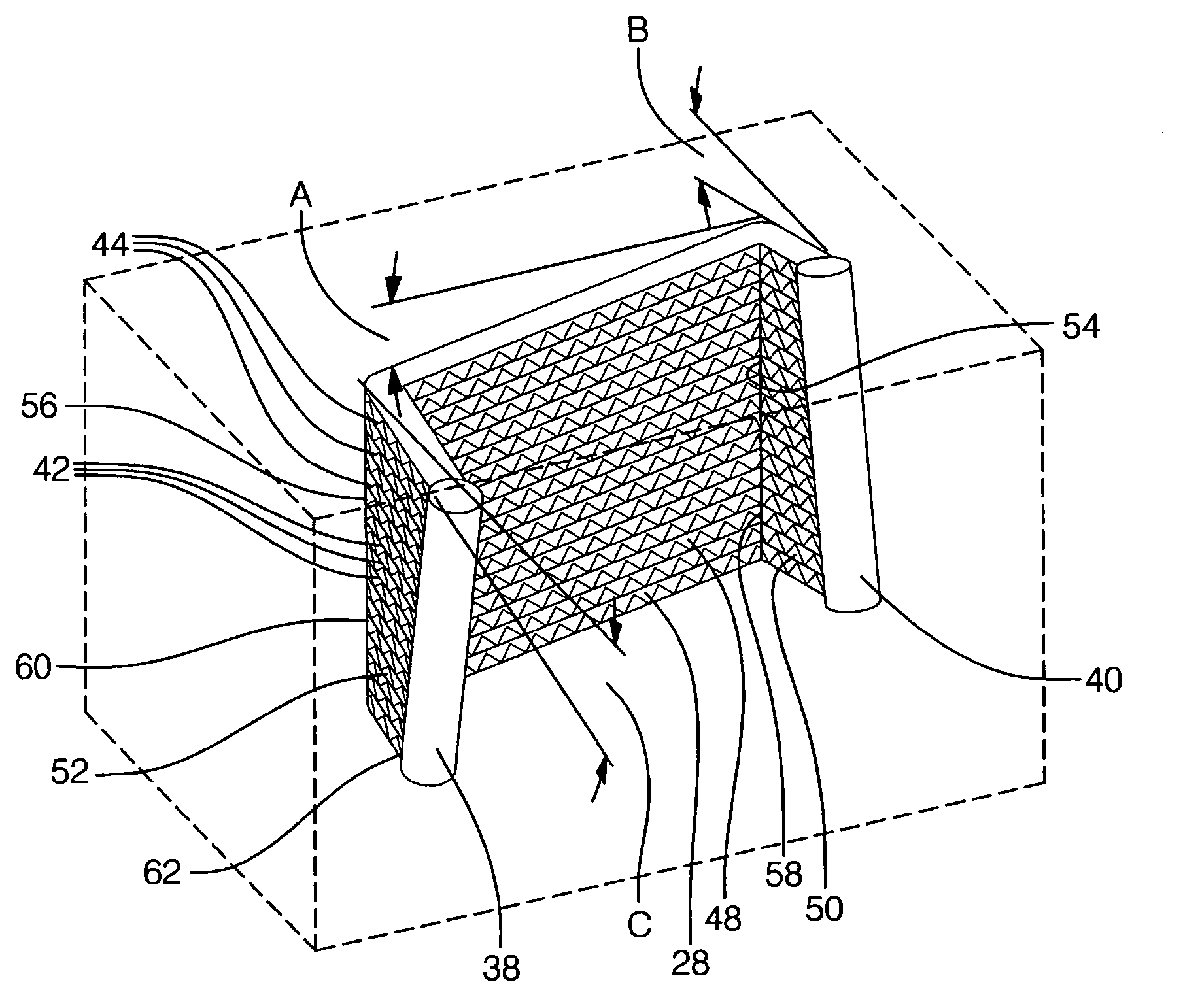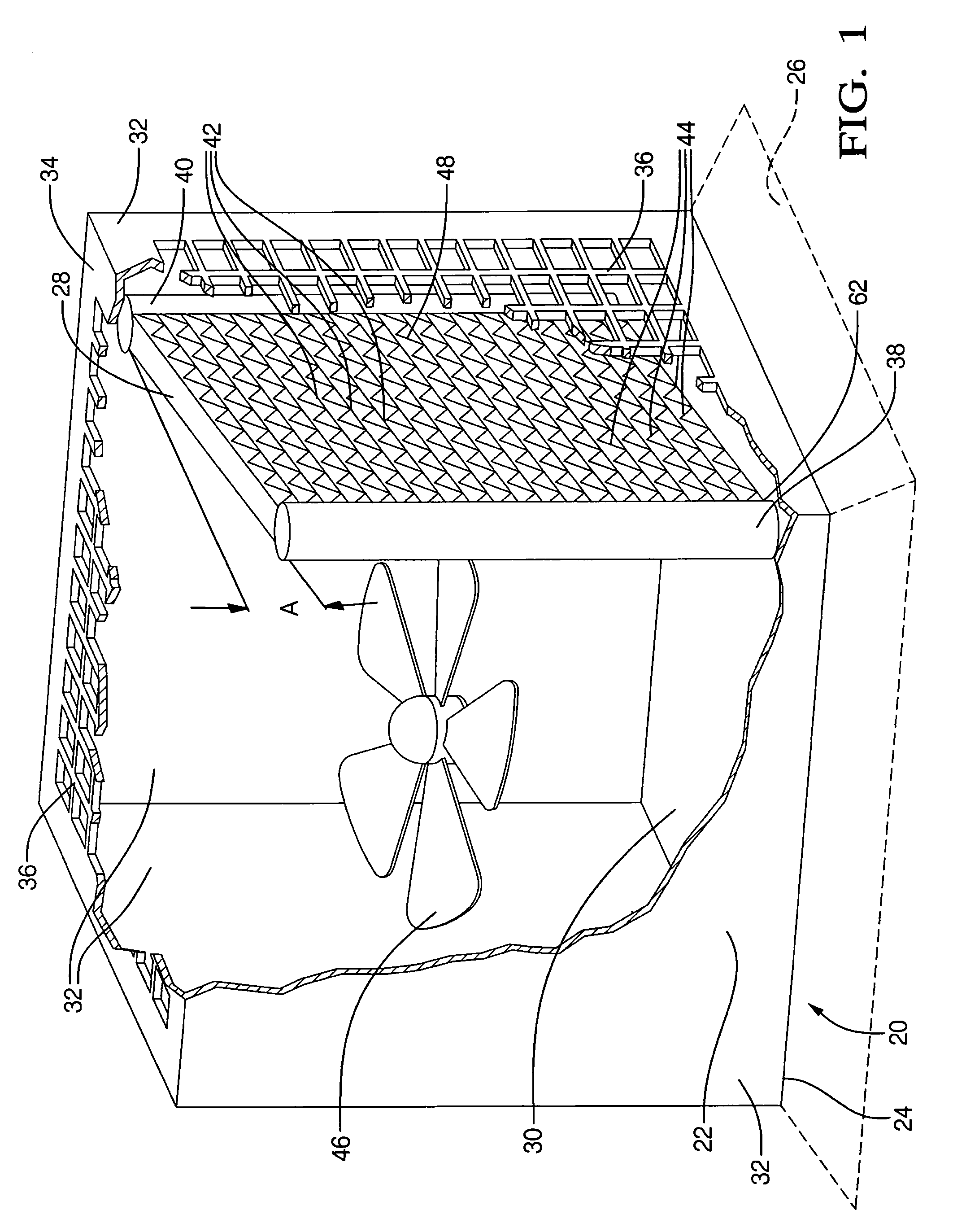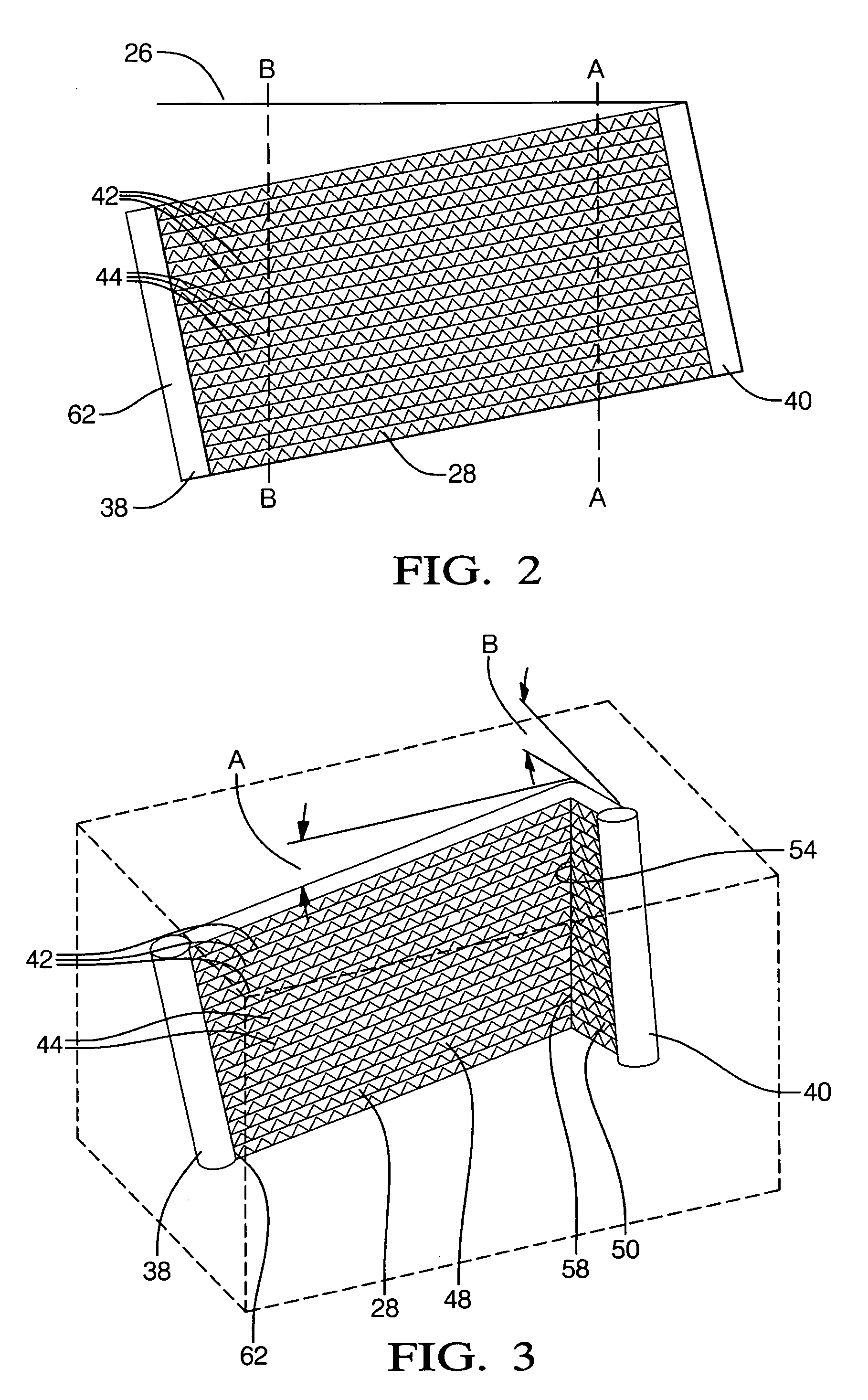Heat exchanger unit
a heat exchanger and unit technology, applied in the field of heat exchanger units, can solve the problems of air flow and heat transfer reduction
- Summary
- Abstract
- Description
- Claims
- Application Information
AI Technical Summary
Benefits of technology
Problems solved by technology
Method used
Image
Examples
second embodiment
[0050]In the second embodiment, the second section 50 extends at a second angle B relative to the first plane 26. Preferably, the second angle is greater than or equal to 5 degrees.
[0051]In the second embodiment, the common drainage point 62 is located at the first manifold 38. In other words, condensate on the second section 50 of each of the tubes 42 drains along the second section 50 toward the first bend 54. This condensate at the first bend 54 as well as condensate on the first section 48 drains toward the first manifold 38. When the condensate reaches the first manifold 38, the condensate drips down the first manifold 38 to the common drainage point 62.
[0052]For illustrative purposes, FIG. 2 shows line A which corresponds to the first bend line 58. Specifically, line A extends angularly relative to the first manifold 38. Preferably, line A extends at the first angle A relative to the manifolds 38, 40. In such a configuration, when the first section 48 extends at the first angl...
fifth embodiment
[0058]In the heat exchanger, as shown in FIG. 6, each of the tubes 42 includes the first bend 54 connected to the first section 48 and the second section 50 extending from the first bend 54. The first bends 54 of each of the tubes 42 are spaced from one another along the first bend line 58. Preferably, the second section 50 extends perpendicularly relative to the first section 48. Each of the tubes 42 extend angularly from the first manifold 38 and from the second manifold 40.
[0059]In the fifth embodiment, as in the second embodiment, the second section 50 extends at a second angle B relative to the first plane 26. In the fifth embodiment, as in the second embodiment, the common drainage point 62 is located at the first manifold 38.
[0060]For illustrative purposes, FIG. 5 shows line C which correspond to the first bend line 58. Specifically, line C extends in parallel with the manifolds 38, 40. In such a configuration, when the first section 48 extends at the first angle A relative t...
seventh embodiment
[0064]In the heat exchanger, as shown in FIG. 8, each of the tubes 42 extend perpendicularly from the first manifold 38 and from the second manifold 40. Each of the tubes 42 includes the first bend 54 and the second bend 56 with the first section 48 extending between the first bend 54 and the second bend 56. The second section 50 extends from the first bend 54 and the third section 52 extends from the second bend 56. The first bend line 58, the second bend line 60, the first manifold 38, and the second manifold 40 extend in parallel.
[0065]As shown in FIG. 8, the second 50 and third 52 sections of each of the tubes 42 extends in parallel with the first plane 26 while maintaining the first section 48 at the first angle A relative to the first plane 26. In the seventh embodiment, the common drainage point 62 is located at the second bend line 60. In other words, condensate on each of the tubes 42 of the first section 48 drains along the first section 48 toward the second bend 56. When ...
PUM
 Login to View More
Login to View More Abstract
Description
Claims
Application Information
 Login to View More
Login to View More - R&D
- Intellectual Property
- Life Sciences
- Materials
- Tech Scout
- Unparalleled Data Quality
- Higher Quality Content
- 60% Fewer Hallucinations
Browse by: Latest US Patents, China's latest patents, Technical Efficacy Thesaurus, Application Domain, Technology Topic, Popular Technical Reports.
© 2025 PatSnap. All rights reserved.Legal|Privacy policy|Modern Slavery Act Transparency Statement|Sitemap|About US| Contact US: help@patsnap.com



